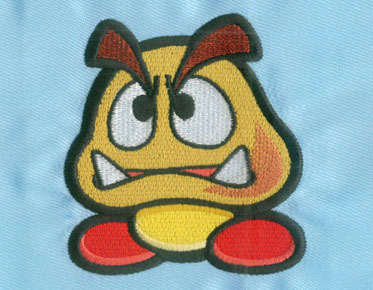Exploring the Versatility of Vector Art in Branding and Marketing
In the dynamic and visually-driven world of branding and marketing, the use of vector art has emerged as a powerful tool for businesses seeking to make a memorable impact. Vector art offers a unique combination of versatility, scalability, and aesthetic appeal that sets it apart from other design forms. In this comprehensive guide, we will delve into the world of vector art and explore how its versatility plays a pivotal role in shaping successful branding and marketing strategies.
Understanding Vector Art
Before we dive into the applications of vector art in branding and marketing, it's essential to grasp what vector art is and how it differs from other graphic design formats.
Vector vs. Raster Graphics:
Vector art is created using mathematical equations to define shapes, lines, and colors. It's resolution-independent, which means it can be scaled infinitely without losing quality. On the other hand, raster graphics, such as JPEGs and PNGs, are composed of pixels and become pixelated when resized.
Key Characteristics of Vector Art:
● Scalability: Vector art can be scaled up or down without loss of quality, making it perfect for various applications, from business cards to billboards.
● Precision: Vector art allows for precise control over shapes, curves, and lines, ensuring a clean and crisp appearance.
● Editable: Vector files can be easily edited and customized, allowing designers to make changes quickly and efficiently.
● Small File Size: Vector files are generally smaller in size compared to raster images, making them ideal for web design and digital marketing.
Versatility of Vector Art in Branding
Branding is the process of creating a unique identity for a business, and vector art plays a pivotal role in this endeavor. Here's how vector art's versatility contributes to effective branding:
1. Logo Design
● Scalability: A logo needs to be adaptable to various contexts, from a tiny favicon on a website to a large banner on a billboard. Vector art ensures that your logo remains sharp and clear at any size.
● Consistency: Vector logos maintain their integrity across different mediums, ensuring that your brand's visual identity remains consistent.
● Color Variations: Vector art allows for easy experimentation with different color variations of your logo, helping you find the perfect palette that resonates with your audience.
2. Brand Elements
● Typography: Vector art can be used to create custom fonts and typography that align with your brand's personality and values.
● Icons and Symbols: Custom icons and symbols can be designed in vector format, reinforcing your brand's unique identity.
3. Marketing Collateral
● Business Cards: Vector art ensures that your logo and contact details are sharp and legible on business cards, leaving a lasting impression on potential clients.
● Brochures and Flyers: Vector-based graphics can be seamlessly integrated into marketing materials, allowing for high-quality, professional presentations.
4. Merchandise
● Apparel: From branded clothing to promotional merchandise, vector art ensures that your logo and graphics look exceptional when printed on various materials.
● Promotional Products: Custom vector art can be applied to promotional items like pens, mugs, and tote bags, increasing brand visibility.
Vector Art in Marketing
Marketing relies heavily on visual communication, and vector art is a valuable asset in creating impactful marketing campaigns. Here's how vector art's versatility enhances marketing efforts:
1. Web Design
● Responsive Design: Vector graphics adapt seamlessly to responsive web design, ensuring that your website looks polished on all devices.
● Fast Loading: Smaller vector file sizes contribute to faster website loading times, improving the user experience.
● Infographics: Vector art is perfect for creating engaging and informative infographics that convey complex information in a visually appealing manner.
2. Social Media
● Profile Images: Vector avatars and profile images maintain their quality and clarity on social media platforms, enhancing your brand's online presence.
● Visual Content: Vector art can be used to create eye-catching visual content, such as illustrations and graphics, to accompany social media posts.
3. Email Marketing
● Email Templates: Vector-based email templates ensure that your marketing emails are visually appealing and render correctly across various email clients.
● Icons and Buttons: Custom vector icons and buttons can be designed to drive engagement and encourage click-through rates.
4. Print Advertising
● Magazines and Newspapers: Vector graphics are ideal for print advertising, ensuring that your ads appear crisp and vibrant in publications.
● Posters and Banners: Large-scale vector art can be used for posters and banners, capturing attention in high-traffic areas.
5. Packaging Design
● Product Labels: Vector-based labels and packaging designs can be customized to reflect your brand's image and appeal to your target audience.
● Consistency: Vector art ensures that packaging designs remain consistent, even if they need to be resized for different product variations.
Vector Art and Brand Consistency
Consistency is a cornerstone of effective branding and marketing. Vector art's adaptability and scalability contribute significantly to maintaining brand consistency across various touchpoints:
● Uniformity: Vector-based logos and brand elements appear the same on business cards, websites, social media profiles, and merchandise, reinforcing brand recognition.
● Adaptability: As your brand evolves and expands, vector art can be easily adapted and updated to reflect changes in design direction or messaging.
● Timelessness: Vector art doesn't degrade over time, ensuring that your brand's visual identity remains fresh and relevant for years to come.
Vector Art Resources and Tools
To harness the versatility of vector art effectively, designers and marketers can explore various resources and tools:
1. Vector Software
● Adobe Illustrator: A leading vector graphics software, Adobe Illustrator offers a comprehensive suite of tools for creating and editing vector art.
● CorelDRAW: CorelDRAW is another popular vector graphics software known for its versatility and user-friendly interface.
2. Vector Stock Websites
● Adobe Stock: Adobe Stock offers a vast library of vector graphics, illustrations, and templates that can be licensed for commercial use.
● Shutterstock: Shutterstock provides an extensive collection of vector assets suitable for various design and marketing projects.
3. Graphic Design Services
● Professional Designers: Experienced graphic designers can create custom vector art tailored to your brand's specific needs and vision.
4. Online Design Tools
● Canva: Canva is an online design tool that offers vector elements and templates, making it accessible to individuals with minimal design experience.
● Vectr: Vectr is a free, web-based vector graphics editor suitable for beginners and small businesses.
Conclusion
Vector art's versatility is a game-changer in the world of branding and marketing. Its ability to maintain quality at any size, adapt to various mediums, and convey brand consistency makes it an invaluable asset for businesses aiming to leave a lasting impression. Whether you're designing a logo, creating marketing collateral, or enhancing your online presence, vector art empowers you to visually communicate your brand's identity with clarity and impact. Embrace the versatility of vector art, and watch as it transforms your branding and marketing efforts into memorable and visually captivating experiences for your audience.


